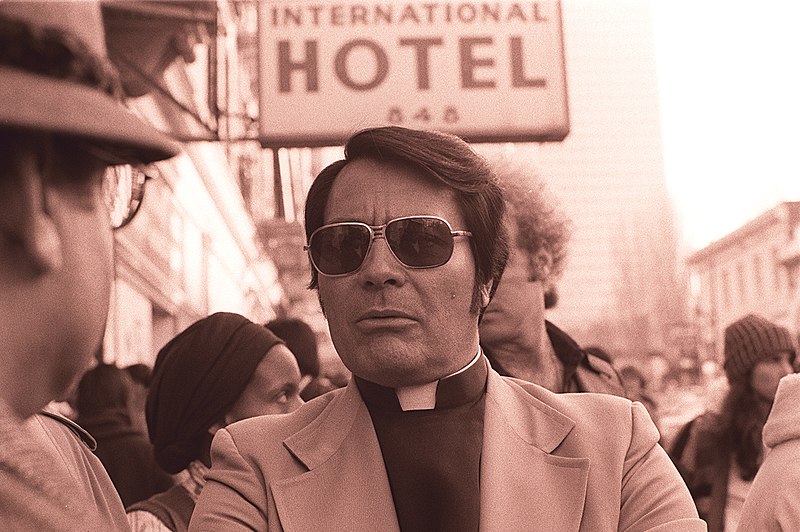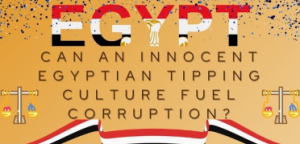Have you ever heard of the Kool-Aid Massacre? Where one mind-controlling, manipulating man led to hundreds to their deaths? Throughout the 20th century, numerous cults shaped America’s history in terrifying ways. Some of the most memorable have been the Manson Family, Heaven’s Gate, and The People’s Temple Agricultural Project. It takes a second when someone hears The People’s Temple to remember what happened, but usually mentioning the Jonestown Massacre helps them recall the terrors that happened that day.
Jim Jones, a preacher, started The People’s Temple Agricultural Project in the mid-1950s while residing in Indianapolis. The goal of the organization was to fight against racism and poverty, and Jones’ followers were primarily African Americans. Jones believed in Christianity and socialism. His organization “…was dedicated to the pursuit of social justice along Marxist lines.”1 He thought it was unfair that the rich were able to be happy and living a wonderful life while the poor or racially discriminated endured a life of hardships. He believed everyone deserved equality. Jones called his mission “apostolic socialism” through Marxist theology. He invented this term as a way to describe his church as something that used faith healings alongside an upbeat style from black churches. He began to become more demanding of his followers, insisting they call him “father” or “dad.”2 This was the first step in how Jones’ demands would become more of a problem.

Jones eventually moved the organization to Redwood, California because of his growing population of followers. He began calling the organization a church. Eventually he created churches in Los Angeles and San Francisco, where he later moved the his headquarters. He opened up churches in black communities around San Francisco to gain more followers.3 Jones became so popular that he was elected a chairman of the San Francisco Housing Authority Commission.4 This gave him more power and notoriety among the general population. With this much power, expressing his ideas increased the followers he gained. He climbed his way up and made himself a powerful, controlling man through his charisma and ideology. This led to the rise of popularity of his church and influenced even more people to join.
Cults became increasingly popular in America throughout its history because people have found them appealing to their beliefs and values. Some join due to the cult believing in the same values or having the same desires for changes to political or racial relations. Many cults are considered as religious or political based on their values. There are 600 different alternative religions in America and Canada alone that can be considered cults.5Many of the cults in the past represented some part of a countercultural movement happening within America during the late 20th century. John R. Hall, an American author, wrote, “the radical Left and counterculture’s emergence in the 1960s did not go unchallenged. Rather there was a broad-based reaction- on cultural, social, and political fronts.”6 The appearance of cults became more apparent during this time due to the political and social movements that were happening in America. People who were thought of as a minority or people from a lower social class wanted change. These people wanted change so badly that they willingly believed in anyone charismatic enough and who promised to give them what they wanted whether it be money or equality.7
As the People’s Temple grew, the larger population of San Francisco became worried about the church and its preachings. The citizens thought it was strange that the church employed armed guards at all times.8 Accusations spread about the organization participating in financial fraud and abusing some of its members. New West Magazine described Jones as a sexual predator and drug user. The magazine also stated that Jones faked ceremonies where he healed his followers, and he scammed his followers out of their money.9

While being investigated for these accusations and crimes, Jones decided to move his church to Guyana in South America after discussing with his followers. One of his followers suggested Guyana because of the black, socialist leaders in charge of the country. Jones and his followers thought because of that, they would be able to live peacefully in Guyana.10 After all Jones’ followers moved to Guyana, family members became concerned since Jones would not allow followers to communicate with their families in the United States. These family members begged California congressman Leo Ryans to take a trip to Jonestown and bring home their family members. The congressman agreed to take a trip to figure out what was happening after the death of a former temple member who previously spoke about leaving the church. The congressman’s suspicions rose, and he felt he needed to investigate for himself. The trip started out going extremely well. Jones welcomed Congressman Leo Ryan. Jones invited him to have food and attend a musical rehearsal. According to sources, all the followers forcefully pretended to be happy and pretended everything was going fine while the congressman was there. Some families who asked congressman Ryan to take them back to the United States with him. Jones became furious and secretly devised a plan that was the starting point of the deaths for many.11
By promising their followers a new way of life, cult leaders gain a type of control over members’ minds and lives themselves. There is a stereotype within cults that leaders use brainwashing or mind control on their followers in order to fulfill their selfish wants.12 Some cult members lie and pretend to have psychic readings and psychic healings. This leads many people to believe in these leaders and start giving complete devotion to them. Followers begin to see their leader as a “Living God.” This leads to followers enduring physical pain and abuse to show their dedication. There are several ways followers expressed this in the past such as depriving themselves of sleep or not eating the proper nutrients needed for their body.13 If a follower refuses to comply with showing their devotions in such ways or simply want to live the group, leaders execute them. One survivor notes how he wanted to leave, and he received a choice of either being shot or drink poison. Although he escaped, not many were as lucky.14 Eventually this leads to the last devotion any follower gives their leader, their life.
Due to the concern that arose, Congressman Leo Ryan agreed that the people wanting to go home may go with him. Jones showed no anger while Congressman Ryan was there. As soon as he left to his plane, Jones ordered for all of the ones leaving to be killed. There was nine members who went to shoot everyone who decided to leave. Everyone died including Congressman Leo Ryan, who was shot over twenty times.15 Not long after, Jones planned a mass-suicide for all the members to join in. The majority of the members participated in drinking poisoned punch. The children, unaware, drank the poisoned punch first, and then the adults drank the punch next. Armed guards stood ready to shoot if members refused to participate. Guards shot all of the members who tried running away. This resulted in over 900 deaths.16 Jones coined the event as “revolutionary suicide,” and it received the nickname “Kool-Aid Massacre.” These events took a toll on American citizens as it was one of the largest mass killings in history at the time.17

The sad truth is that some of these American cults ended in the death of hundreds. As a last step to show their devotion to their leader, followers willing participate in committing suicide or committing mass murder. This could be done in numerous way such as either injecting themselves or others with poison or killing and taking the lives of innocent people. 18 The followers believe they are proving themselves worthy to their leader by giving this last devotion of taking their lives or others. This ultimately gives the leader the last control over the follower’s lives.
Even though the event that took place was a tragedy, some members escaped and survived the mass-suicide. Jim Jones was found dead with a shot to his head, but there is no evidence to know if he killed himself or if someone else killed him. The rest of the members that resided in California eventually ended the organization. The members that survived went on to tell their stories and how Jim Jones controlled and acted.19 The actions of Jim Jones led to the loss of hundreds American lives in total. Even though these events happened forty-one years ago, it still is one of the most tragic events to happened in America’s history.
- Salem Press Biographical Encyclopedia, 2019, s.v. “Jonestown and the People’s Temple,” by Joseph P Byren. ↵
- Richard Cavendish, “The Jonestown Mass Suicide,” History Today 58, no. 11 (2008): 13. ↵
- Salem Press Biographical Encyclopedia, 2019, s.v. “Jonestown and the People’s Temple,” by Joseph P Byren. ↵
- Wikipedia, 2019, s.v. “Jonestown.” https://en.wikipedia.org/wiki/Jonestown. ↵
- Robert Emmet Long, Religious Cults in America (New York: H.W. Wilson, 1994), 75. ↵
- John R. Hall, “Jonestown in the Twenty-First Century,” Society 41, no. 2 (2004) 9. ↵
- James R. Lewis, Cults in America : A Reference Handbook (California: ABC-CLIO, 1998) 18. ↵
- Salem Press Biographical Encyclopedia, 2019, s.v. “Jonestown and the People’s Temple,” by Joseph P Byren. ↵
- Richard Cavendish, “The Jonestown Mass Suicide,” History Today 58, no. 11 (2008): 13. ↵
- Wikipedia, 2019, s.v. “Jonestown.” https://en.wikipedia.org/wiki/Jonestown. ↵
- Wikipedia, 2019, s.v. “Jonestown.” https://en.wikipedia.org/wiki/Jonestown. ↵
- James R. Lewis, Cults in America : A Reference Handbook (California: ABC-CLIO, 1998) 39. ↵
- Robert Emmet Long, Religious Cults in America (New York: H.W. Wilson, 1994), 16. ↵
- Robert Emmet Long, Religious Cults in America (New York: H.W. Wilson, 1994) 17. ↵
- Wikipedia, 2019, s.v. “Jonestown.” https://en.wikipedia.org/wiki/Jonestown. ↵
- Salem Press Biographical Encyclopedia, 2019, s.v. “Jonestown and the People’s Temple,” by Joseph P Byren. ↵
- Wikipedia, 2019, s.v. “Jonestown.” https://en.wikipedia.org/wiki/Jonestown. ↵
- Robert Emmet Long, Religious Cults in America (New York: H.W. Wilson, 1994), 17. ↵
- Wikipedia, 2019, s.v. “Jonestown.” https://en.wikipedia.org/wiki/Jonestown. ↵



49 comments
Oscar Ortega
Still very difficult to read about the Jonestown Massacre. As with many things it’s a stark reminder of the truly deplorable things people are capable of, and what they can drive others to think, feel, or do with the right words, phrases, timing, or delivery. As saddening as it is to know of this horrific tragedy it’s important that we remember that people can and do manipulate others, and if it seems that you feel something is too good to be true, it is likely that it is. Fantastic work.
Tavion Varela
I had never heard of the Jonestown Massacre before reading this article but it was an interesting story. It is always interesting to read about cults because they are groups that are not talked about much. I would never think that so many people would be involved to either help the followers or to stop the cult altogether. It is sad that something so pure could end in the deaths of a huge mass of people.
Shriji Lalji
A very informative article. I wonder if Jim Jones had a very captivating personality or were the poor African Americans just very desperate. Either way I think his motive was to appear as the poor peoples messiah while in reality just taking advantage of them. I have always been curious as to what the individual is thinking when causing harm to many people. In addition cults can motivate people to do various things that they would rather not have the courage to do as individuals.
Angela Perez
This was quite an intriguing story! While the name Jim Jones sounded familiar, I had never heard of this massacre. I found the development of the story to be very well written and it gave just the right amount of information needed. It is horrifying to think that so many cults formed in the United States and may still be alive and running today.
Maria Obregon
This article was a very interesting one to read. I had never heard of Jim Jones, but I now definitely know what I needed to know about him thanks to this article. I think it is very sad how people joined this cult, with good intentions, them being to fight racism and poverty, but instead were made to lose all communication with their family members, and they were also killed.
Erin Vento
This was a really interesting story! I had never heard of the Koolaid Massacre before, and I was waiting for the whole article to see why it was called that. I’m glad it was later in the story. I like how you wrote about why people found the cult appealing. I feel like there’s stories about people joining cults and doing horrible things, but we never get to hear a rationale about why people join.
Victor Rodriguez
Wow, what a story! I had never heard about the Jonestown Massacre up to this point. I think it is devastating and horrifying to see how many people were killed and tortured. I still do not understand how a certain person could project so much hate for someone and persuade others to have that same sort of feeling. In regards to human rights theme, I believe that every person should have that right to life and pursue happiness, and this man just took advantage of his power. I believe that feeling superior than another group. He manipulated and controlled,and watching that is just a violation of human rights.
Franchesca Baldwin
Wow, what an interesting story. I’ve heard about this before but all I previously knew was that a preacher started a cult and he and his hundreds of dedicated followers poisoned themselves with kool-aid. I had no idea that there were any politics involved prior to the massacre, or that so many people tried to flee, or that a congressman was murdered in an effort to help them. It’s incredible that something could’ve started with such pure intentions and end so horribly, and it makes one wonder if Jim Jones ever truly cared about racial inequality and the like at all — or if he just used it as a way to lure people in.
Eric Grant
Your article reminds me of the fickleness of humans in general. People joining cults seem to draw from our pursuit to find purpose in life. People should have the right to believe in whatever they want, but as soon as the belief turns into violence or begins to coerce others to commit violent acts, that is, in my opinion where the line should be drawn.
Alexandria Garcia
This is a truly devastating situation that occurred. It is interesting that he used so many psychological tactics to become the man of power and influence that he was. He took an issue that was prevalent: racism and discrimination and poverty and he used this all to his advantage to gain followers, trust and support. Once he had that he began to shape his ideology and create an institution that would be hard for some to leave and that many would inadvertently die for. He abused the idea of human rights and the fight for it for his own personal gain.